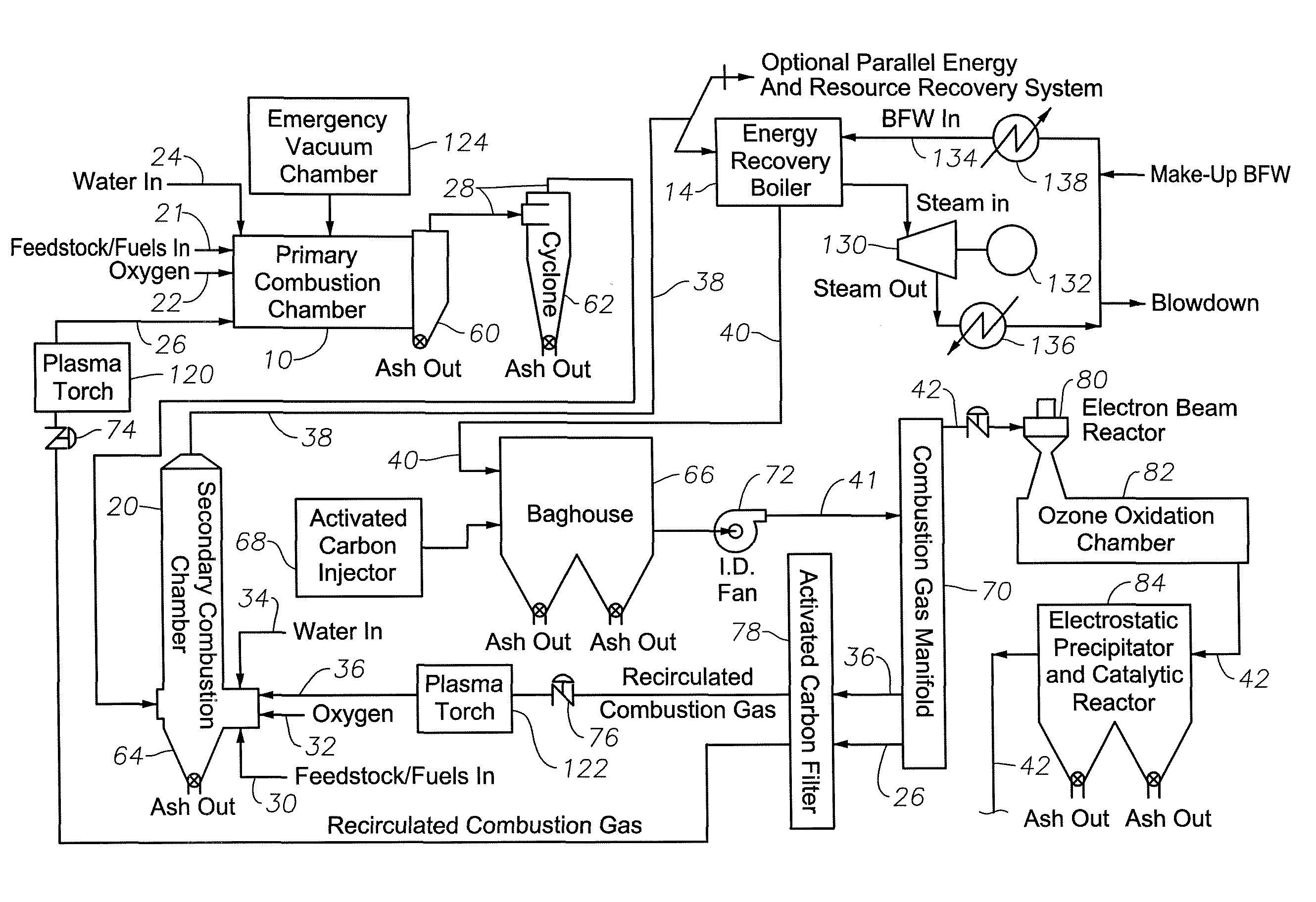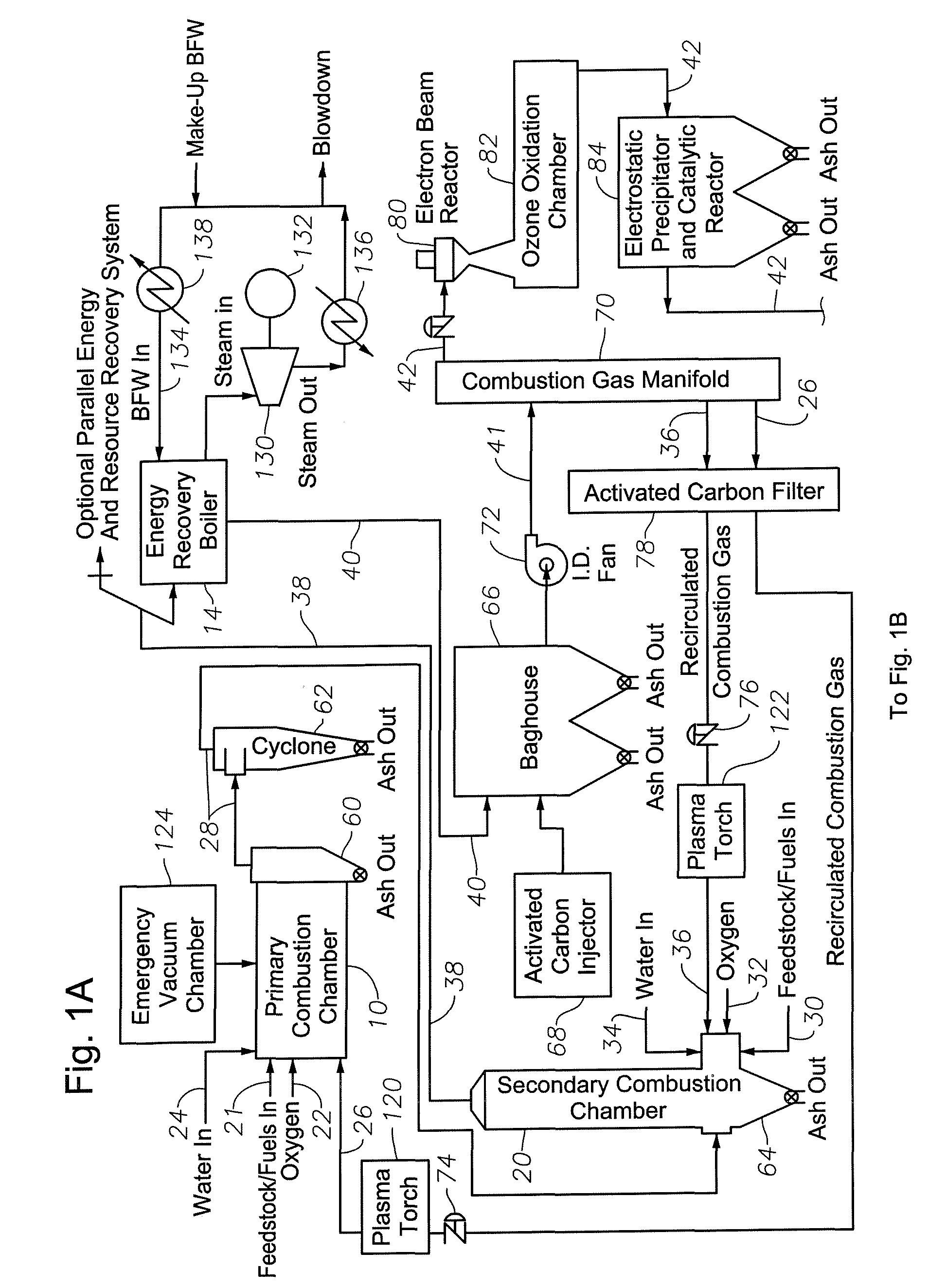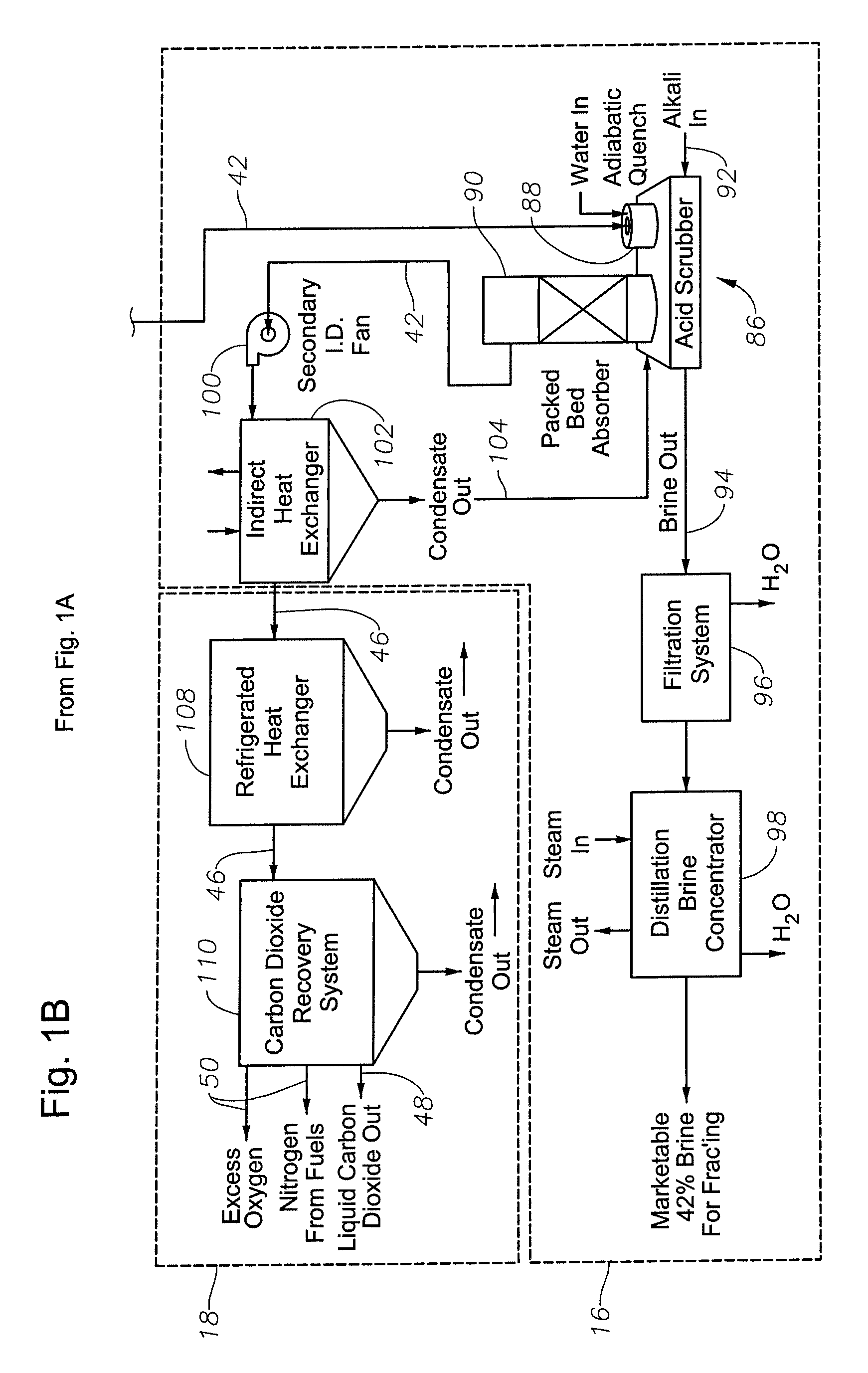Reduced-emission gasification and oxidation of hydrocarbon materials for hydrogen and oxygen extraction
a technology of hydrocarbon materials and gasification, applied in the field of reduction, can solve the problems of high temperature, low gasification production of dioxin, and high production of hydrogen, and achieve the effects of less feedstock conversion, higher heat transfer rate of boiler efficiency, and faster combustion temperatur
- Summary
- Abstract
- Description
- Claims
- Application Information
AI Technical Summary
Benefits of technology
Problems solved by technology
Method used
Image
Examples
Embodiment Construction
[0024]In a preferred embodiment of the invention, a gasification / oxidation process and system maximizes the generation of marketable products from the complete combustion of various hydrocarbon feedstocks with minimal (or zero) environmental emissions. The product water generated by the process as well as any quench water recovered from the process are collected and then electrolyzed to generate oxygen and hydrogen gases. The oxygen and hydrogen gases are separated into their pure components using membrane separation technologies, pressure swing adsorption, or other separation technologies known to those skilled in the art. These separated, purified products are then marketed and sold as value-added products resulting from the complete combustion process. Alternatively, the purified oxygen may be reused in the system / process described herein to aid in the complete combustion of additional hydrocarbon feedstock. The complete combustion portion of the system and process, illustrated i...
PUM
 Login to View More
Login to View More Abstract
Description
Claims
Application Information
 Login to View More
Login to View More - R&D
- Intellectual Property
- Life Sciences
- Materials
- Tech Scout
- Unparalleled Data Quality
- Higher Quality Content
- 60% Fewer Hallucinations
Browse by: Latest US Patents, China's latest patents, Technical Efficacy Thesaurus, Application Domain, Technology Topic, Popular Technical Reports.
© 2025 PatSnap. All rights reserved.Legal|Privacy policy|Modern Slavery Act Transparency Statement|Sitemap|About US| Contact US: help@patsnap.com



